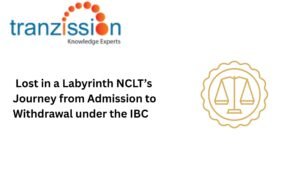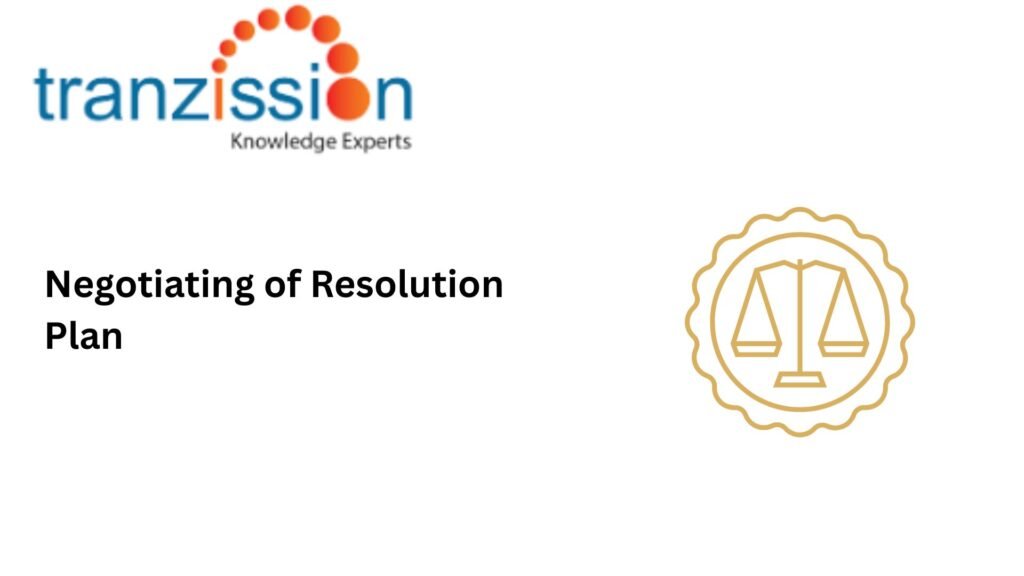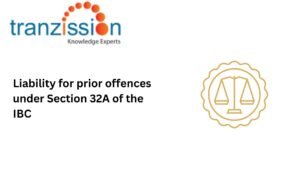
Negotiating of Resolution Plan

Table of Contents
Insolvency often involves a complex web of relationships between various stakeholders, including creditors, debtors, and potential investors. It provides a platform for these parties to openly communicate, understand each other’s interest, and collaboratively work towards resolution. Negotiating of Resolution Plan enables creditors and debtors to reach mutually beneficial agreements, such as structured payment plans or partial debt forgiveness. This approach reduces legal costs and resolves disputes faster than litigation.
Key Players in the Negotiating of Resolution Plan
During the Negotiating of Resolution Plan in the corporate insolvency resolution process (CIRP), key players include the resolution professional (RP), the Committee of Creditors (CoC), and resolution applications (RA):
- The RP acts as a facilitator and ensures transparency and fairness throughout the process. They manage the debtor’s affairs, convene meetings, and oversee the submission and evaluation of resolution plans, all while maintaining impartiality and adhering to legal timelines.
- The CoC holds significant decision-making power and focuses on maximising asset recovery, assessing risks associated with viable resolution plans, and ensuring their feasibility. The CoC evaluates and approves resolution plans, potentially including liquidation, and also determines the process for making expenses and professional fees.
- RAs proactively prepare their initial offers and remain flexible to potentially enhance their bids during discussions with the CoC. This strategy allows applicants to present strong proposal
Structuring the Negotiation Framework
The Expression of Interest (EoI) and Request for Resolution Plan (RFRP) processes set the stage for selecting a resolution applicant and structuring the resolution plan under the Insolvency and Bankruptcy Code, 2016 (“the IBC”).The EoI process begins with the invitation for potential RAs to express their interest in participating in the CIRP of a stressed company. This step aims to identify eligible entities who can submit a resolution plan. Once the EoI process identifies eligible applicants, the RFRP is issued. This document provides detailed information about the company undergoing CIRP, the requirement for the resolution plan, and importantly, the evaluation matrix that will be used to assess the plans. The RFRP also sets timelines for submissions and other crucial aspects of the process. The evaluation matrix is a critical component of the RFRP, guiding the CoC in selecting the most suitable resolution. It typically involves a two-pronged approach:
- Quantitative parameters, which will be 70%, which are objective, measurable factors, such as financial proposals, timelines for implementation, and liquidation value, that can be easily quantified.
- Qualitative parameters, the remaining percentage, and are more subjective factors that assess the viability and feasibility of the plan, such as, management capability, business plan, and future prospects.
Negotiating of Resolution Plan Dynamics Post-Bid
In the insolvency proceedings, post-bid negotiations are an important stage where the RP and the CoC engage with the applicants to finalize a resolution plan. Further, the CoC has the discretion to Negotiating of Resolution Plan with applicants and request revised or enhanced offers, even after the initial round of bidding, as long as it is within the framework of the RFRP and the timelines set.
Key Negotiation Elements
Negotiations commonly occur during the resolution plan and approval phase, and also includes:
- Value of recovery: Negotiations impact the value of recovery by influencing the terms of settlement, specifically by affecting the amount of upfront cash received and the discount rates applied to future payments. A successful Negotiating of Resolution Plan can lead to a higher upfront payment, reducing the need for creditors to rely on potentially risky future payments, and secure a lower discount rate.
- Payment structure: Negotiations can impact timelines for approval of the resolution plan and subsequent implementation. The IBC aims for a time-bound resolution process, and negotiations play a crucial role in determining how and when creditors will be paid.
- Equity stake & control: Resolution plans involve haircuts on existing debt, which can lead to a significant dilution of the equity held by existing shareholders, especially if the plan involves significant debt restructuring or equity infusion by new investors. Thus, negotiations alter a company’s equity stake, governance, board representation, and managerial rights. The resolution process can also lead to change in ownership structure, with new investors inquiry equity and control. This can result in a dilution of existing shareholders’ stake and a shift in the composition of the board of directors, potentially impacting managerial control.
- Preservation of business viability: It also aims to preserve business viability by facilitating resolution plans that prioritize restructuring, debt infusion, and operational efficiency while maximising asset sale value. The IBC provides a structured framework for this process, focusing on transparency, time-bound resolution, and stakeholder involvement.
Read more : What is the purpose of AFA for Insolvency professionals?
Role of Disclosure & Documentation
To ensure transparent negotiation within the IBC framework, the RP must disclose avoidance actions, valuation reports, and updated asset information in the Information Memorandum (IM). The RP has the duty to ensure that the information in the IM is current and reflects any changes in the debtor’s asset position, allowing for accurate assessments. Further, RAs can base revised offers on accurate due diligence and RP’s fair and liquidation value inputs.
Legal & Regulatory Safeguards
- Ensuring section 29A compliance is crucial for maintaining fairness and credibility during the insolvency process, and it is also vital to thoroughly vet these for each applicant.
- The National Company Law Tribunal (NCLT) has the power to oversee the actions of both the RP and the COC, particularly regarding the eligibility of resolution plans and the fairness of the negotiation process.
- The NCLT and the National Company law Appellate Tribunal (NCLAT) can reject resolution plan revisions that are submitted late or that do not comply with regulations during the CIRP.
Case Illustrations
In the Ashdan Properties Pvt. Ltd. v. Dr. Mamta Binani & Committee of Creditors of Rolta India Ltd. case, the NCLT affirmed the CoCs right to invite revised offers from all RAs, even after initial negotiations with the highest bidder (H1) had concluded. The court emphasized that the CoCs actions were aimed at maximising the value of the corporate debtor, which is a core objective of the CIRP. The NCLAT upheld the decision of the CoC in the Reliance Broadcast case, affirming their power to assess the eligibility of a RA before applying a resolution plan. The NCLAT emphasised that the CoCs commercial wisdom in approving a resolution plan is generally not subject to judicial review unless there is a clear violation of law or procedural irregularities.
Best Practices for Effective Negotiation
There are certain tips for RAs, RPs, and CoC to ensure that the negotiation stage during the insolvency process, which are:
- RAs need to understand the evaluation criteria under section 29A of the IBC, conduct thorough diligence throughout the process, and develop flexible, realistic plans for negotiation. This ensures a strong proposal that addresses the needs of stakeholders and increases the likelihood of approval by the CoC.
- RPs are mandated to ensure full disclosure and transparency regarding timelines and to manage bidding rounds carefully. This includes providing a transparent process for the submission and evaluation of resolution plans, as well as facilitating negotiations between the CoC and prospective RAs.
- The CoCs commercial wisdom involves making decisions that balance maximising creditor recovery with ensuring the viability of a resolution plan. The CoC, composed of financial creditors, plays a crucial role in approving resolution plans, monitoring the RPs work, and encouraging enhanced offers during negotiations.
Conclusion
Negotiating of Resolution Plan acts as a crucial bridge in the insolvency process, enabling stakeholders to navigate complex situations, minimize conflicts, and work towards a more efficient and beneficial resolution. Hence, negotiation is not just an option, but a crucial and often necessary component of the resolution process. It is essential for achieving successful outcomes like debt restructuring and asset resolution. To shift the focus of negotiation from procedural formality to value-driven outcomes, it is necessary to emphasise the potential for mutual gains, encourage open communication, and understand each stakeholder’s underlying needs and interest.





